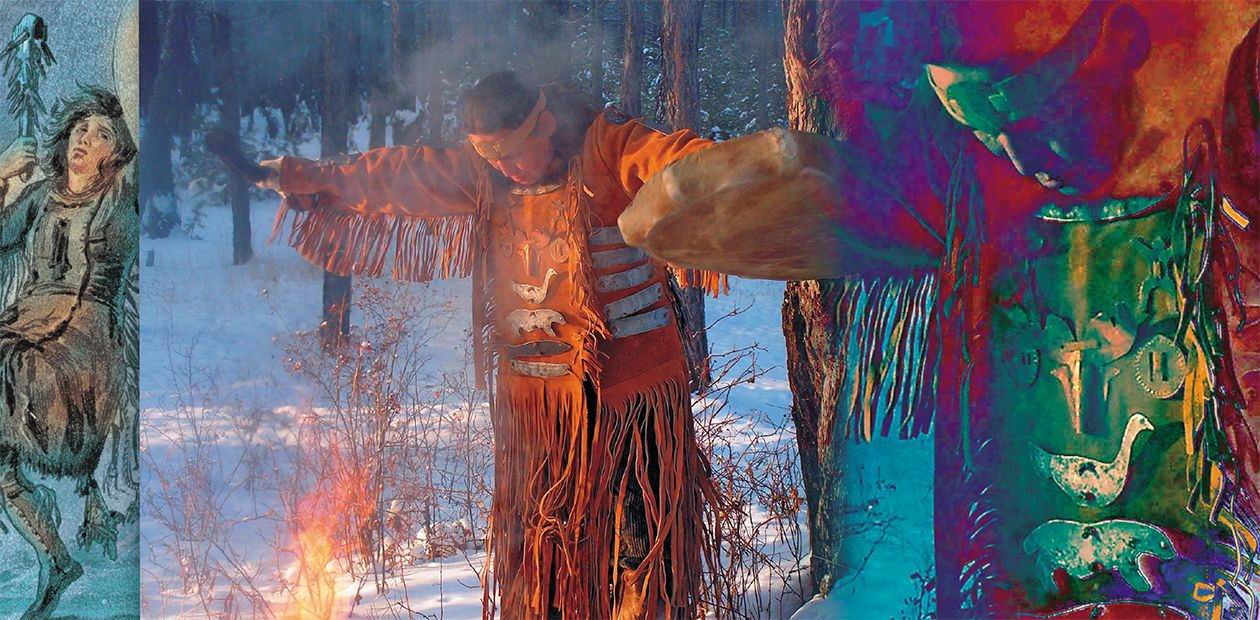The Echo of Shaman’s Tambourines
Shamanism is one of the most ancient religious systems. Underlying it is belief in spirits and the possibility of contacting them. The middleman between the human world and the invisible, transcendental world of spirits is the central figure of shamanism. Not everybody can perform this role – only he who has lived through the special “shaman’s disease,” he who has experienced the rite of initiation. He is the chosen of the spirits, a priest and a healer. Lapsing into an ecstatic state, a shaman travels across the worlds of the Universe and finds the spirit that has caused the sick man’s disease. This happens during “kamlaniye,” a special shamanist mystery. There is more to shamanism though than ritual practices
It includes a whole system of visions, which have virtually remained intact since the old times. These are cosmological, totemic, animistic and other beliefs on the structure of the Universe, man’s place in it, and his connection with the surrounding world.
According to the model most popular among the Siberian peoples, the Universe consists of three worlds: the Upper, the Middle, and the Lower. Placed one below the other, they correspond to the celestial, terrestrial and underground spheres.
The Upper World is inhabited by celestials, heroes, spirits that master the elements and the celestial bodies. Dominating among them is the supreme god, the creator of the world and the people. The people themselves live on the earth, in the Middle World. Everything around them – forests, mountains, rivers, animals, homes, fires, and household utensils – has a master spirit. The spirit can help people, for example, with hunting or fishing, or can punish them if they treat the spirit without due respect. After death people go to the underground Lower World, the dreary kingdom of the dead. The Lower World is a mirror reflection of the Middle World: when it’s winter in the Middle World, it’s summer in the Lower World; when it is daytime with the living, it is night with the dead, and so on.
The spirits of the Upper and Lowers worlds can pay visits to people. While the former can transfer magic powers to people and are able to make them younger or even bring them back from the dead, the latter bring misfortune, diseases, and death, and in these cases only a shaman can rescue people. With the help of his personal patron spirit – as a rule, this is the soul of another shaman, now dead – he goes to the underworld in order to find the evil spirit that has done harm to the person. In his arduous and perilous undertaking the shaman relies on the spirit-helpers, who take the form of animals, fishes or birds, and on his ritual utensils: a tambourine and a tampon and shaman’s clothes, among other things.
SCIENCE First Hand has already written about Siberian shamans – today, it addresses the subject again in order to share with its readers new ethnographic data on the ritual shamanistic burials, still in place in some remote parts in the north of Yakutia, and to tell the readers about mysterious shaitans, legends about whom were written down by Russian explorers in the 18th and 19th centuries.













